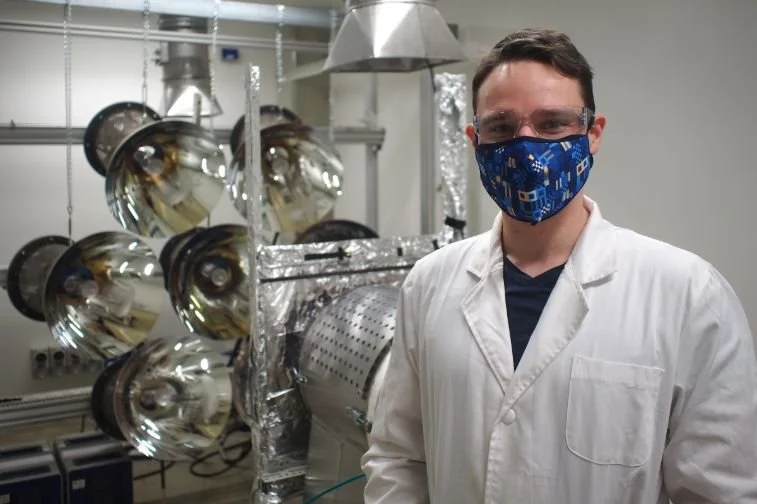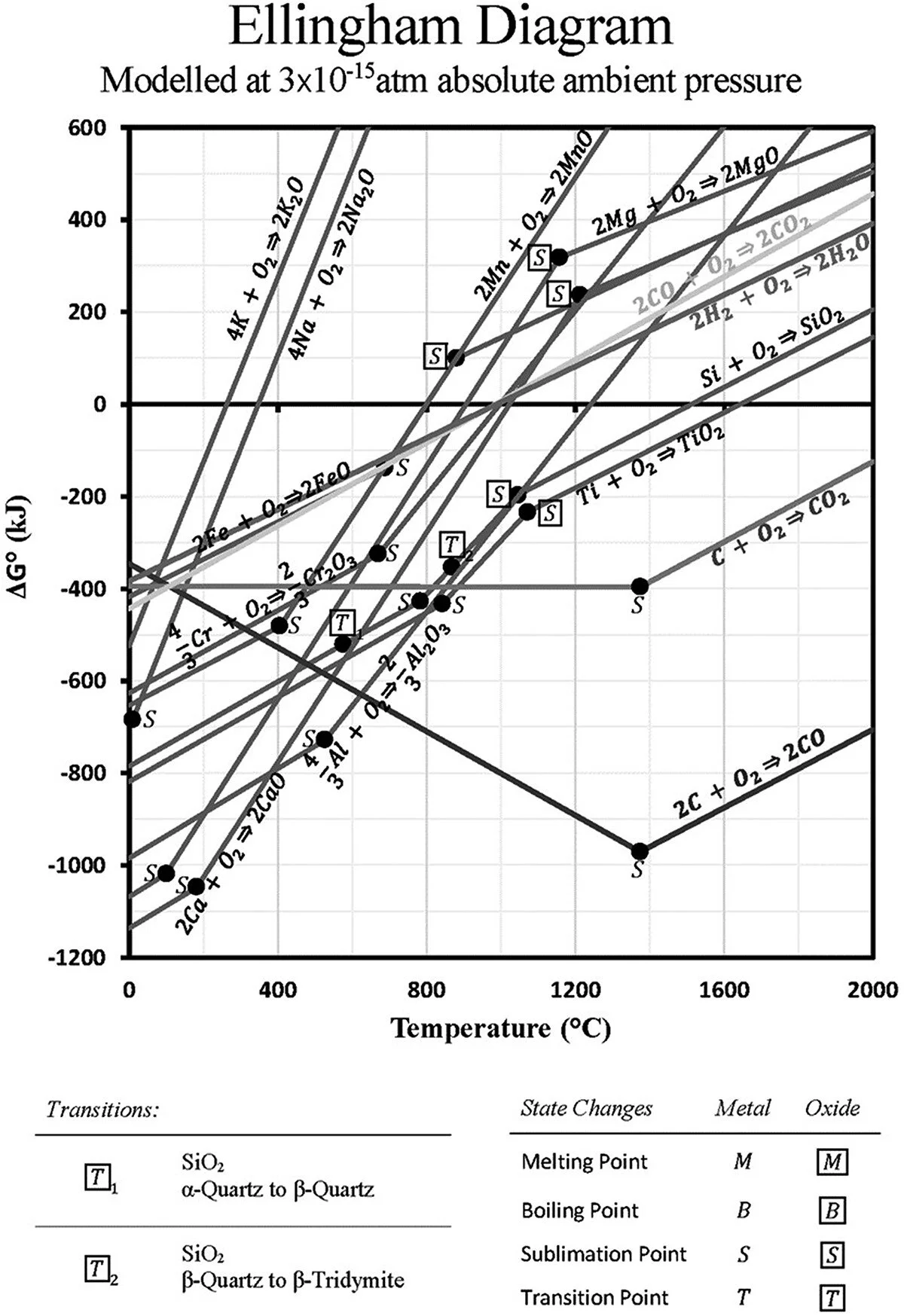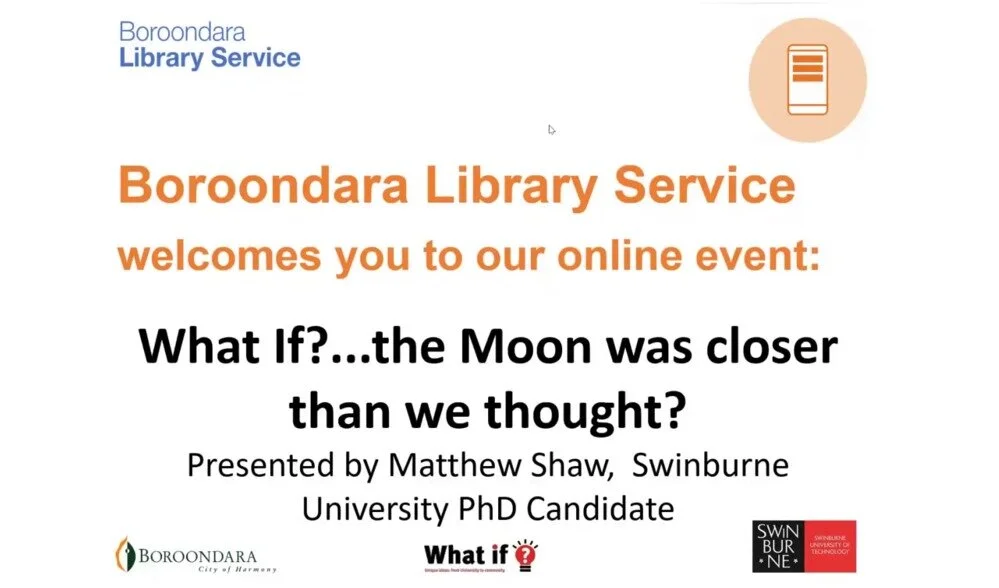
Public
Public profile of Swinburne astronomer Professor Alan Duffy, an experienced communicator with company events, media, appearances, and school talks/public lectures on dark matter, big data, AI, and alien worlds. He is an experienced public speaker, science communicator and leading expert in space science and astrophysics.
Pro Vice Chancellor of Flagship Initiatives at Swinburne University Of Technology, driving large and ambitious transdisciplinary research across our flagship research areas (Space/Aerospace, MedTech Health, Hydrogen and Renewables). From 2021 - 2023, was the founding Director of the Space Technology and Industry Institute and continue as a Professor of Astrophysics @ Swinburne University.
I've spoken at hundreds of events but some particularly unusual opportunities were chatting all things science with Brian Greene as host for "An Evening with Dr Brian Greene", speaking at TEDxSydney in the Sydney Opera House, a Science-Improv night at the Adelaide Fringe, a nation-wide tour with BBC Worldwide / RiAus show The Science of Doctor Who Live and even a Planetarium production on Dark Matter called Dark (now shown in 148 planetariums across 25 countries in 6 languages).
I am incredibly fortunate that I have been able to travel across Australia explaining everything from Black Holes to Aboriginal Astronomy to thousands of students in dozens schools everywhere from inner city private schools to remote indigenous schools in the outback.
See my CV for more.
LATEST events
You're looking at Swinburne University of Technology's new Pro Vice Chancellor, Flagship Initiatives 🙌The PVCFI is a new role tasked with driving large and ambitious transdisciplinary research across our flagship research areas by actively engaging with external organisations (including government, industry, NGOs) to identify large-scale opportunities that require university-wide collaboration and the formation of coalitions of universities and partners.
It was a thrill to join The Project on the desk to share the news of NASA’s DART Mission making history as they successfully intercepted an asteroid demonstrating that we can deflect a potential Earth-colliding one in future through an impact with a spacecraft.
ALL EVENTS
It was an honour to brief US Ambassador Caroline Kennedy and Consul General Christine Elder on the myriad industry, education, and workforce opportunities in the space sector for our two nations of Australia and the USA, as part of the AmCham Australia Space Committee. On a personal as well as professional level, this was a highlight..! You could say I was over the Moon with this meeting.
You're looking at Swinburne University of Technology's new Pro Vice Chancellor, Flagship Initiatives 🙌The PVCFI is a new role tasked with driving large and ambitious transdisciplinary research across our flagship research areas by actively engaging with external organisations (including government, industry, NGOs) to identify large-scale opportunities that require university-wide collaboration and the formation of coalitions of universities and partners.
It was a thrill to join The Project on the desk to share the news of NASA’s DART Mission making history as they successfully intercepted an asteroid demonstrating that we can deflect a potential Earth-colliding one in future through an impact with a spacecraft.
I spoke to Australian space pioneer Dr Chris Boshuizen at the Powerhouse Museum about his efforts in space… from a small country town, to co-founding Planet Labs (now the largest Earth Observing satellite fleet in history) to provide open and accessible satellite-based planet monitoring (if you have used Google Maps, you’ve used his company’s images!) and then fulfilling his lifelong dream of space travel onboard the second Blue Origin New Shepard flight in October 2021, making Chris the third Australian in space
It was an incredible honour to host the inaugural Australian Space Summit held in Sydney, bringing together inspiring industry leaders to share with colleagues nationwide the tools and strategies to break into the domestic and global supply chain. I can’t wait for next year!
The precious metals used in our smartphones were forged in dying stars and mined from the Earth at enormous cost, so we aren’t getting any more of them! Yet there are over 4 million unused or broken mobile phones gathering dust in our homes and businesses representing a huge stockpile of valuable materials and metals that can be reclaimed through recycling with MobileMuster in their Go For Zero campaign this year.
Questacon is the national science and technology centre and an absolute treat to get to spend a day visiting but the questions I was asked when there were so tough! What would you have answered?
After years of work from teams worldwide, we are finally nearing the completion of the deepest underground physics laboratory in the Southern Hemisphere all searching for dark matter!
So it was a double thrill that I could take one of Australia's biggest shows - Network 10's #TheProjectTV - on a tour of this Stawell Underground Physics Laboratory
ncreasing amounts of space debris are nearing a critical point, where unavoidable collisions will cause more debris, in a disastrous chain reaction that will make space inaccessible to us. This has been termed the Kessler Syndrome. Once the cascading collisions begin, they cannot be stopped.
As I explain in this thought piece for the The Age, Australia has an important role in this global issue as we monitor vast skies with space technologies that few others in the Southern Hemisphere have.
Image by ESA
I’m beyond thrilled to celebrate our Space Institute PhD student Matt Shaw and his incredible win at the 3MT APAC international finals. Against entries by 54 universities from around the region his work on mining the moon to provide metals for constructing moonbases (seriously how cool is his Thesis) was found the most engaging - considering you have just Three Minutes(!) to explain three years of work, his efforts to connect with the audience are nothing short of amazing
When it comes to mining the Moon, and how best to extract those critical resources, for fuelling our further exploration of the Solar System this massive review paper will be seen as a critical resource itself! Incredibly work by Matthew Shaw and Matthew Humbert, two doctoral candidates within the Extraterrestrial Resource Processing group led by Profs Geoff Brooks and Akbar Rhamdhani, at Swinburne’s Space Technology and Industry Institute.
Incredible news as one of the largest Federal Government’s Modern Manufacturing Initiative grants ($2.325M from Gov, for a total expenditure of $4.65M) is awarded to Titomic and Swinburne!
A seamlessly connected world, where information streams effortlessly across people, industry, cities, farms and satellites. In which data that originates from Earth is conveyed and used as easily as the data generated from sensors in orbit. All of which is combined to inform decisions in either domain.
This is the Internet of Space Things (IoST), and it is the natural future extension of the internet as the predominant communications and data-exchange structure of our time. We already have half a dozen devices connected to the Internet of Things for every person on Earth, producing 79 ZETA bytes of information (that’s nearly a million million 4k movies worth of data!) by 2025, the options in using this data are endless and the future is seamless.
In the next two decades we will search the skies, solar system and space for alien life with new techniques and technologies thousands of times more powerful than all of humanity's efforts to date. I toured the world speaking to experts in this search for alien life, as well as the kinds of life we might uncover, and of course a serious investigation into the claims that it may already be here(!)
My thanks to Audible for making possible this incredible journey. I hope you enjoy listening to what I discovered with Astronomical - Looking for Life Beyond Earth
I got a chance to speak to the space and spatial focussed Locate podcast about all things to do with space, the industry, my efforts and more. It was a lot of fun chatting with Alicia and Roshni, I hope you enjoy it too!
It is a pleasure to be the MobileMuster Program Ambassador and support their campaign to have Australian's send in the 5 *million* broken smartphones lying around in homes nationwide. If our campaign is a success we will have recovered nearly 10,000 tonnes of precious minerals and metals, as well as the CO2 saved equivalent to planting 50000 trees. All from us collectively sending in our broken phones!
Let's #GoForZero broken phones at home this March.
I'm beyond thrilled to announce that I have been appointed the inaugural Director of the new Space Technology and Industry Institute at Swinburne University of Technology !
I can’t wait to help companies and communities solve their problems on Earth through Space, together with my amazing Swinburne colleagues.
This is a staggering, and very surprising, announcement by the Australian Space Awards to name me the Academic of the Year! This is particularly so given the incredible and world-leading efforts of my fellow finalists in this category.
Space is a multidisciplinary domain so my individual Award is actually a team Award in reality - and one that recognises my extraordinary Swinburne colleagues (Virginia Kilborn, Bronwyn Fox, James Davern and Geoff Brooks to name but a few!) who have worked so hard to make our collective efforts deserving of this recognition, efforts that are truly out of this world.
Melbhenge is where the Sun sets at 7:57pm (get there at least 15 minutes before) at exactly 250 degrees, meaning it aligns perfectly with a mile of skyscrapers in Melbourne’s Hoddle-grid. Remember, please don’t look directly at the Sun! But viewed safely this is a truly gorgeous evening event (just enjoy J L R Reyes’s work from last year!) and finding exactly the best place to view is always important. This year it’s particularly important we move out across the city to find the best spot (tag your photo with location and #Melbhenge) as we have to ensure we keep a safe, social distance from one another. So be safe and enjoy the Sun responsibly friends.
Together with principal supervisor Prof Geoff Brooks, I co-supervise a fantastic PhD student Matt Shaw on techniques to mine the moon (or rather how to process the regolith you mine!) He gave a fantastic talk on the Moon as part of the wonderful What If? series of lectures organised by the City of Boroondara where Swinburne’s Hawthorn campus is based. Great work Matt!
A fantastic initiative by The Project to showcase some science experiments you can do at home. Alongside our experiments, they also brought together amazing resources such as the free RiAus education packs or NASA STEM@Home, perfect for students or teachers (and parents!) exploring this strange new quarantined world of teaching at home.
I was amazed to find myself nominated as Academic of the Year in the inaugural Space Connect Australian Space Awards but to find myself now a finalist is beyond ridiculous..! Thankfully the Honour of being alongside such incredible finalists is all I need, as there's no way I'm winning against such legends.
I don’t want this to sound like an Oscar acceptance speech but this is truly an incredible (and humbling!) honour to serve on the Australian Space Agency’s inaugural Space Industry Leader’s Forum. It’s even more humbling when you see my fellow exceptionally experienced and talented colleagues on this Forum…!
It was a career highlight for me to be the MC for the Nation’s most prestigious awards, the Prime Minister’s Prizes for Science, and that it was the 20th anniversary just made it all the more amazing to be a part of, for me. The end result that a majority of awards went to women (for the first time!) made that experience even more wonderful.
I am thrilled (and also a little intimidated!) to join the Questacon Advisory Council and help, in whatever small way I can!, Australia’s leading science communication and engagement centre. Each year, Questacon welcomes over 500,000 visitors to the two facilities in Canberra while more than 660 000 see their exhibitions in other museums and centres around Australia and overseas. Outreach programmes take to the roads each year, visiting an additional 110 000 in towns and communities across the country.
One of the great strengths of the Royal Institution of Australia is our community of distinguished figures from science, education and industry, who have made this Nation better through science; we call them our Braggs. At a fancy lunch that brings together distinguished guests, former recipients and of course our new Braggs we celebrate their achievements and encourage all involved to collaborate in the hopes that a room full of brilliant will do brilliant things, both with the RiAus but also beyond it.
Anyone who knows me knows that I am a big fan of space, a huge fan of Apollo and a MASSIVE fan of Apollo on the biggest screen in the world. In other words, it was a complete joy getting to explain the incredible achievements that made the Moon Landing possible, as well as the film itself Apollo, to attendees at the premiere screening at IMAX Melbourne. Afterwards I was able to try and answer a few of the hundreds of attendees questions in the Q&A that really kept me on my toes..!
Victoria's state government will contribute $5 million to build the Stawell Underground Physics Laboratory.
The funding has been announced by Victoria’s state Minister for Regional Development, Jaclyn Symes, and matches the federal government’s funding commitment confirmed in April. The laboratory will be built one kilometre underground, within the Stawell Gold Mine, as a bespoke excavated cavity 30 metres long, 10 metres wide and 10 metres high. It will provide ultra-low background research facilities (free from the particles that form background radiation) needed in the ground-breaking search for dark matter.
Really excited to finally share something that’s been in the works for a while, I’ll be lending my weight to a national grant program for schools to purchase cool experiments - through the OfficeMax and Winc STEAM Grant-Bot Program.
To all school teachers out there, just submit a 250 word (or less) entry before July 12 on the www.impressgrantbot.com.au site explaining why you and your school deserve to win. Smart algorithm ‘Grant-Bot’ will select the finalists (with my and leading whale researcher Dr Vanessa Pirotta’s help!) to be in the running to win their share of $50,000 worth of STEAM grants.
At nearly a quarter billion dollars (!) of cash and inkind contributions SmartSatCRC is the largest space R&D investment in Australian history. Huge congrats to all 84 partners, but in particular UniSA and Nova Systems who led this bid from an idea just 18 months ago. On a personal level it’s incredibly exciting to know that we at Swinburne will be a core partner in this incredible new CRC developing a new era of tech for space and the better monitoring of our planet.






























It was an honour to brief US Ambassador Caroline Kennedy and Consul General Christine Elder on the myriad industry, education, and workforce opportunities in the space sector for our two nations of Australia and the USA, as part of the AmCham Australia Space Committee. On a personal as well as professional level, this was a highlight..! You could say I was over the Moon with this meeting.